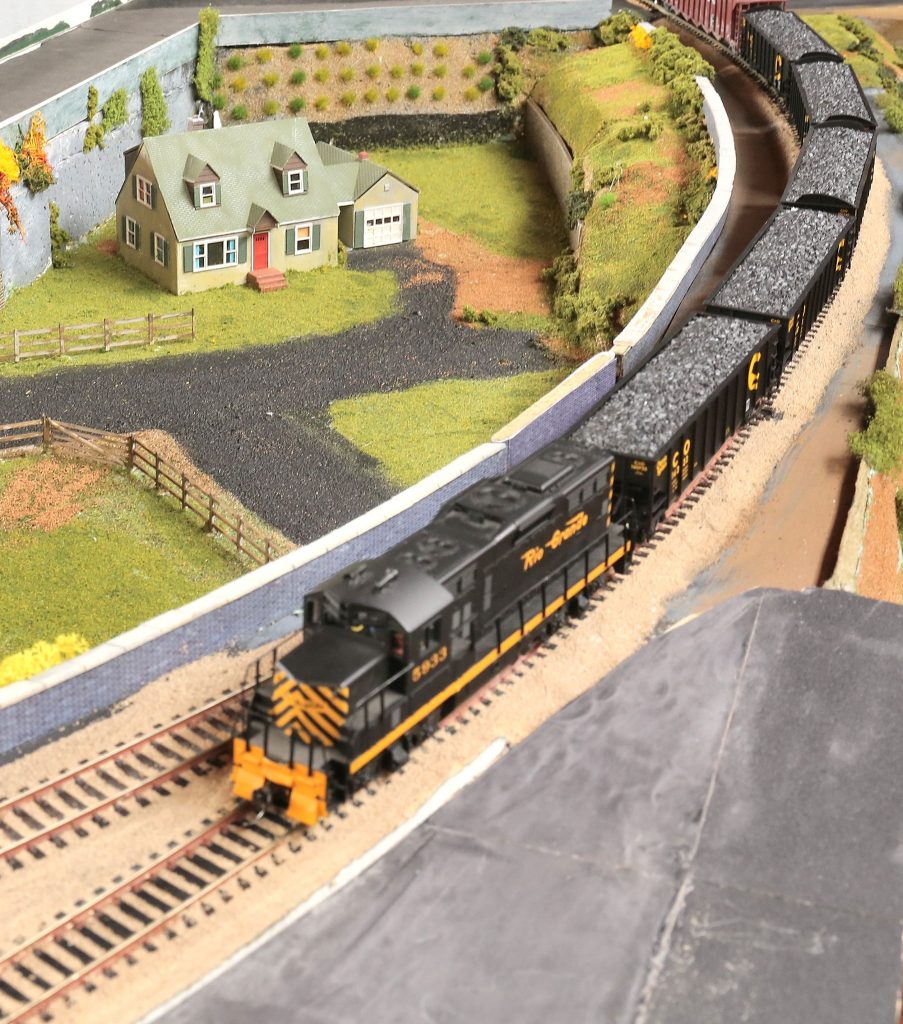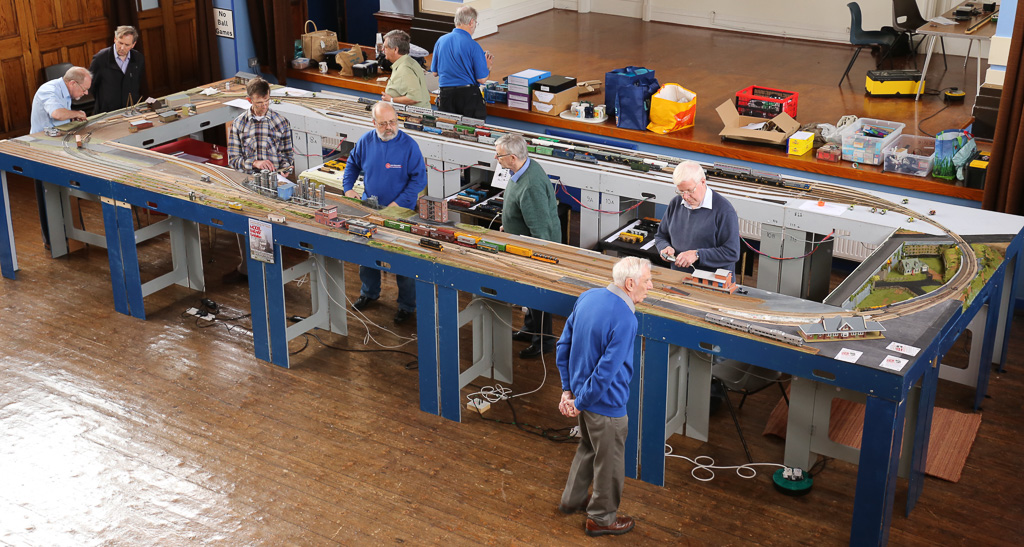HO scale (3.5mm / foot). DCC Gaugemaster Prodigy Advance ™ with up to 4 cabs in use. Analogue control of switches (points) and remote uncouplers.
Youngstown, in this incarnation, is no more. The Team came to the decision in late 2019-early 2020 that the layout as originally conceived was too large and the individual baseboards were far too heavy for Team members to routinely manoeuvre to and from its allocated storage area, as well as taking inordinate lengths of time to set up and dismantle for running sessions. Accordingly, we started to redesign the layout in end-to-end configuration, rather than the previous continuous run format. We also intend to significantly lighten the fewer remaining baseboards using modern materials. This re-purposing will be a big project, but we hope it will allow us to set up the layout much more quickly and to run it much more frequently than was previously the case. This will keep us busy once we the Coronavirus restrictions are removed, but it also represents an opportunity to get involved in a major rebuilding.
Youngstown, the first incarnation-now history
Set in the late 1960’s to early 1980’s, we ran a wide range of locomotives and rolling stock from a variety of railroads, with many different liveries on show.

Having chosen the location at random, we then learnt that the real Youngstown had many miles of freight sidings, at least 6 different railroads (some narrow-gauge), 3 or more steel-works and many other related industries either supplying the steel industry or using its by-products. During the period modelled, it also had major problems with organised crime, corruption and pollution. Diplomatically, we chose not to try to model all of these latter three aspects. The first version of the backscene (plain dark grey) was probably not too far from the atmospheric conditions of the time!
Clearly the size and scale of the prototype presented a dilemma, which we solved by deciding not to try to make a representational model, but rather to give the flavour of American railroading. We chose a North American prototype because we knew little or nothing about it, seeing it as an opportunity to learn something new. Most members of the Team have UK-outline layouts at home, so this is quite a change.
It was a large layout, as can be seen in the following image, taken at one of our annual Open Days- and it typically took 2-3 hours to put it up and start running, and at least 2 1/2 hours to take down and return it to storage. These timescales made it impossible to set up the layout, run it, then put it away it during the 2 1/2 hour duration of Club nights.

There was a dedicated track and loading ramp for TOFC (Trailer on Flat Car (Piggy-back)) services, which run as high speed priority freight traffic (so-called “Hot-shots”).

Seeing one of our long block coal trains of up to 30 x 100ton hopper cars running through the passenger depot (station) and past the industrial areas and classification yard made quite an impression. Even this was a poor shadow of the real thing, where trains 2 miles long are common!
Freight and passenger trains had to recess (take a loop line) in order to pass on the single-track main line.
RDCs (Rail Diesel Cars) provided a local passenger service and Amtrak national passenger trains called at the local depot.
There were a variety of industrial locations and activities to justify meaningful switching movements, including a chemical works and warehousing. One switcher (shunting locomotive) was used in each of the Industrial and Classification yards. Overall it meant that there is almost always meaningful movement on the layout, and frequently at least two things happening all the time. We think that this is important as part of the “entertaining performance” aspect of exhibiting.

Thanks to the range of skills in the Team, we have been able to learn a lot from each other, as well as
- Building and install DCC plug-in stations around the layout for about £2.00 each (2016 prices)
- Install an always-ready capacitor bank to power route-switching, which is more efficient than using a commercial CDU (Capacitor Discharge Unit)
- Doing DCC hard-wire decoder installs, including some quite difficult ones
- Fine-tuning DCC decoders after installation
- Using laptop power supplies for points (switches) and remote uncouplers for reliability and low initial and replacement cost.

We did not try to model the C&O signalling system, mainly because no-one here can understand it. From what we have learnt about grade signals, siding signals, train order systems, CTC (Centralised Train Control) and authorities for trains to pass signals at red subject to direction of travel and weight of train, and all the rest, it was all too confusing. So, if you can explain this subject, please come and enlighten us!
This YouTube video shows one of our early working sessions, when we were track laying-